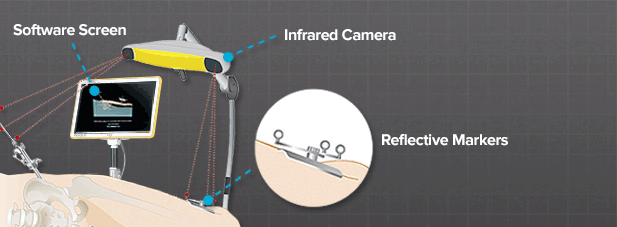
The software-guided system measures the position of your bones and your surgeon’s instruments in relation to each other. To establish these positions, special reflective markers, which are affixed to the patient and the surgical instruments, are tracked by an infrared camera which is connected to the system’s computer. With this position information, the navigation system is able to compute distances, angles and alignment for surgery.
Used in hip procedures, surgical navigation is typically performed without any images such as X-Ray, MRI or CT, beyond those that are used for diagnosis and planning. The navigation system software creates a computerized model of your hip joint which looks like a 3D animation of your internal hip anatomy. This animated model is displayed on the system’s monitor in the operating room. The software tracks your anatomy, helping your surgeon measure and aim for correct joint alignment based on your specific bone structure and ligaments during the surgery.
By ‘tracking’ surgical instruments and artificial components in relation to your anatomy, software-guided surgery systems support your surgeon in restoring stability and function to your hip joint. Studies have shown that better mechanical alignment through software-guided surgery may lead to better functional and patient quality-of-life outcome.